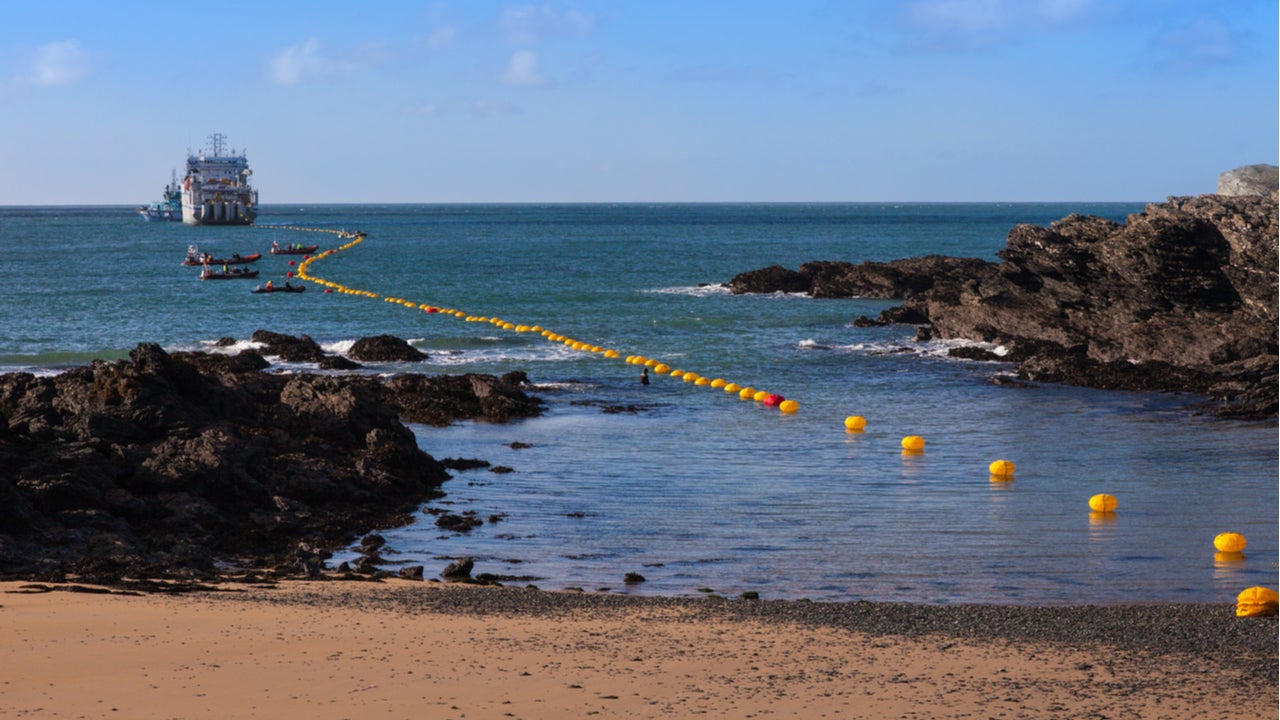
Recent announcements by a number of subsea cable providers are showcasing a number of key trends: not only is subsea capacity more in demand than ever, but these deployments are also serving as an ideal technological proving ground.
Optical transport provider Ciena announced in May that Angola Cables, which has built an extensive submarine cable network named MONET that connects North America, South America, Africa, and Europe, is deploying Ciena’s GeoMesh gear, including its WaveLogic Ai coherent optical technology, to provide more capacity and lower latency. Ciena has indicated it will provide an additional 2.2 Tbps of capacity to segments in the MONET network connecting Miami, Fortaleza, and São Paulo to enhance the performance of bandwidth-intensive cloud-based services.
Another subsea optical vendor, Infinera, is also reaping the benefits of the increased demand for subsea capacity and finding it to be an ideal use case for some of its cutting-edge products.
In March, Infinera reported its gear was being deployed by EllaLink, which is building what it bills as “the industry’s lowest-latency trans-Atlantic cable system between Europe and Latin America.” The new system utilizes 800G coherent technology, currently the state of the art in optical technology, providing an ideal proving ground for Infinera’s ICE6 technology.
Strong growth in the subsea sector
EllaLink will use Infinera gear to support over 100 Tbps of capacity between Portugal and Brazil, as well as 30 Tbps links from Portugal to Madeira, and eventually link up to northern Africa with a 40 Tbps path between Portugal and Morocco. EllaLink also plans to extend its submarine network to French Guiana, Mauritania, the Canary Islands, and Morocco, resulting in the most advanced submarine system connecting Africa, Europe, and Latin America.
A third vendor in the space, Nokia Networks, confirmed what many suspected in its Q1 2021 results: the company posted a 60% increase in revenue in its Submarine Networks business compared to the prior-year quarter on the strength of continued robust deployment activity.
How well do you really know your competitors?
Access the most comprehensive Company Profiles on the market, powered by GlobalData. Save hours of research. Gain competitive edge.

Thank you!
Your download email will arrive shortly
Not ready to buy yet? Download a free sample
We are confident about the unique quality of our Company Profiles. However, we want you to make the most beneficial decision for your business, so we offer a free sample that you can download by submitting the below form
By GlobalDataStrong growth in the division prompted Nokia to bring its Submarine Networks unit back into prime time as part of its ongoing restructuring initiatives. Part of its acquisition of Alcatel-Lucent, Nokia had been looking for a buyer since 2017 and had placed the unit in its ‘General’ business unit – a common move for assets a company considers non-strategic and up for sale.
The company’s decision to include Submarine Networks in its newly formed Network Infrastructure segment in January, along with its routers, optical, and fixed network gear, is a clear sign that Nokia sees its subsea business as an increasingly integral part of its future. With demand only continuing to rise, that’s a wise move.






Related Company Profiles
Infinera Corp
Nokia Corp
Ciena Corp